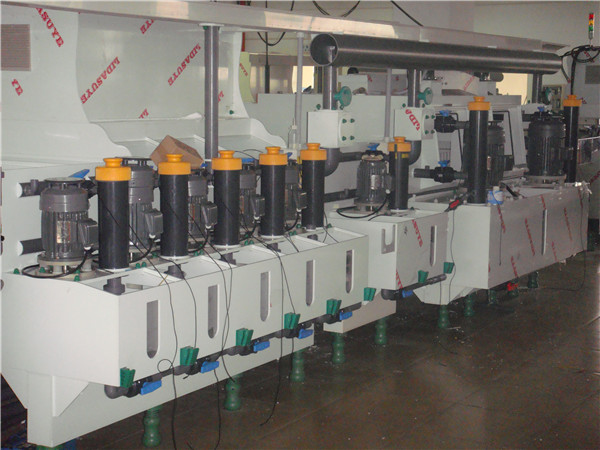Nov . 20, 2024 13:33 Back to list
pvc drainge pipe
Understanding PVC Drainage Pipes Benefits, Applications, and Installation
PVC drainage pipes have become a popular choice in various plumbing and construction applications due to their versatility, durability, and cost-effectiveness. Polyvinyl chloride (PVC) is a synthetic plastic polymer that offers excellent resistance to corrosion, chemical abrasion, and environmental degradation. This article will provide a comprehensive overview of PVC drainage pipes, highlighting their benefits, common applications, and installation procedures.
Benefits of PVC Drainage Pipes
One of the primary advantages of PVC drainage pipes is their resistance to corrosion. Unlike metal pipes, which can rust and degrade over time, PVC pipes maintain their integrity and performance in various environmental conditions. This quality extends the lifespan of the drainage system, making it a reliable choice for residential and commercial installations.
Another significant benefit is the lightweight nature of PVC. These pipes are easy to handle and transport, simplifying the installation process. Additionally, their smooth interior surfaces reduce friction and enhance the flow of water, minimizing the risk of clogs. PVC pipes are also less noisy compared to their metal counterparts, offering a quieter experience in both indoor and outdoor plumbing systems.
Furthermore, PVC is a cost-effective material. The production cost of PVC drainage pipes is lower than that of metal or concrete pipes, making them an economical choice for large-scale projects. This affordability does not compromise quality, as PVC pipes can withstand harsh weather conditions, making them suitable for a wide range of applications.
Common Applications
PVC drainage pipes are widely used in various sectors, including residential, commercial, agricultural, and industrial settings. In residential applications, they are often used for sewer and stormwater drainage systems. Their durability and resistance to root infiltration make them ideal for underground installations, ensuring effective wastewater management.
pvc drainge pipe

In commercial settings, PVC pipes are utilized for drainage systems in buildings, parking lots, and roadways. They can efficiently handle both wastewater and stormwater, minimizing the risk of flooding and water damage. Additionally, PVC drainage pipes are commonly employed in agricultural applications for irrigation and drainage systems, helping to manage excess water and improve crop yield.
In industrial contexts, PVC pipes are used for chemical drainage due to their resistance to a wide range of corrosive substances. This characteristic makes them suitable for factories and chemical processing plants where compliance with safety and environmental regulations is crucial.
Installation of PVC Drainage Pipes
The installation of PVC drainage pipes requires careful planning and execution. Before installation, it is essential to assess the site and determine the appropriate pipe diameter and slope for optimal drainage. Proper slope ensures that water flows efficiently and minimizes the risk of stagnation.
Once the necessary preparations are complete, the installation process begins with trench excavation. The trench must be deep enough to accommodate the pipes while also allowing for a slope of at least 1-2% (1/8 to 1/4 inch per foot) to facilitate drainage. Once the trench is ready, a bed of sand or gravel is typically placed at the bottom to provide stability and support for the pipes.
When laying the pipes, it is crucial to ensure proper alignment and jointing. PVC pipes are usually joined using solvent cement or rubber gaskets, depending on local building codes and regulations. After installation, the trench is backfilled, ensuring that the pipes are adequately covered without excessive compaction that could lead to damage.
Conclusion
PVC drainage pipes represent a practical and efficient solution for various drainage needs. Their numerous benefits, including corrosion resistance, cost-effectiveness, and ease of installation, make them a preferred choice for engineers and contractors alike. As demand for sustainable and durable building materials continues to grow, PVC drainage pipes will undoubtedly remain a staple in modern plumbing and drainage systems. Whether in residential or industrial applications, understanding the advantages and proper installation methods for PVC drainage pipes is essential for ensuring successful long-term performance.
-
High-Quality PPR Pipes and Fittings Durable ERA PPR & PVC PPR Solutions
NewsJul.08,2025
-
Black HDPE Cutting Board - Durable, Non-Porous & Food Safe HDPE Plastic Cutting Board
NewsJul.08,2025
-
High-Quality CPVC Panel Durable HDPE & PVC Panels Supplier
NewsJul.08,2025
-
Double PE Welding Rod Supplier - High Strength, Durable & Versatile Welding Solutions
NewsJul.07,2025
-
High-Quality PVC-O Pipe Supplier Durable 75mm PVC Pipe & Connections Leading PVC Pipe Company
NewsJul.07,2025
-
HDPE Drainage Pipe Supplier – Durable & Corrosion-Resistant Solutions
NewsJul.06,2025

